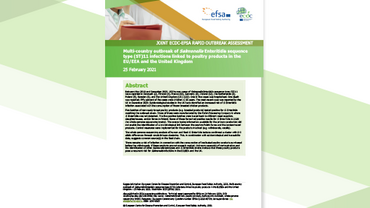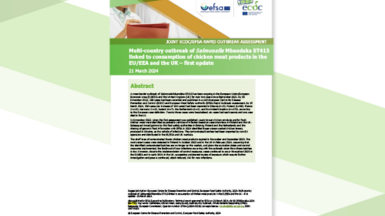Risk assessment: Increased Cryptosporidium infections in the Netherlands, United Kingdom and Germany in 2012
An increase in cryptosporidiosis notifications has been observed in the United Kingdom, the Netherlands and Germany since August 2012 that is likely to be real, and not due to surveillance or notification artefacts.
The overall threat for the European Union/European Economic Area (EU/EEA) is considered to be low. EU/EEA Member States should be alert to an increase in cases as observed in the United Kingdom, the Netherlands and Germany, particularly in relation to immunocompromised and other at-risk groups as they may present with a more severe manifestation of cryptosporidiosis.
Executive Summary
An increase in cryptosporidiosis notifications has been observed by the United Kingdom, the Netherlands and Germany in late summer-autumn 2012. To date, no other countries have reported an unusual increase in reported number of cryptosporidiosis cases.
In response to the increase in notifications, ECDC developed a rapid risk assessment. It concludes that the overall threat for the European Union/European Economic Area (EU/EEA) is considered to be low. However, Member States should be alert to an increase in cryptosporidiosis cases, particularly in relation to immunocompromised and other at risk groups.
The available information from the investigations in the affected countries indicates that there is a not a single, common source, but rather suggest a combination of several causes. These may include climatic drivers, such as the increased rainfall in the summer of 2012 in these countries. Laboratory and epidemiological investigations are ongoing to explore the cause(s) of this increase.






